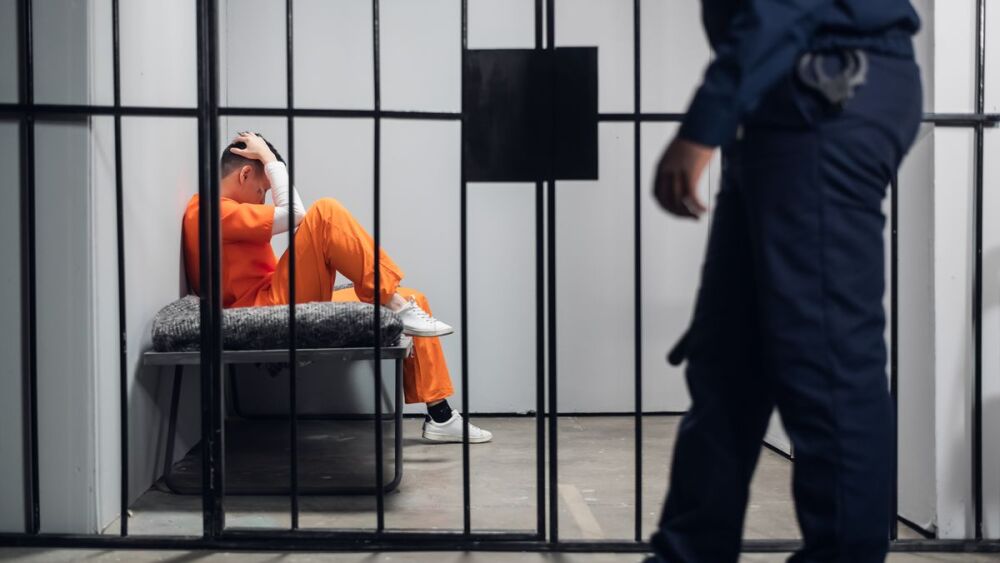Inmate suicide prevention is a huge focus in correctional training and day-to-day jail operations. And for good reason: Suicide makes up 1.7% of all deaths in the U.S., but 30% of all jail deaths. Nearly 10% of jails experienced a suicide in 2019 – a figure that doesn’t include suicide attempts.
It’s not surprising, then, that the issue of inmate suicide was a focus at this year’s American Jail Association Conference & Jail Expo. Even in sessions focused on other topics, inmate suicide prevention kept coming up.
“Even when you’re doing all the things you’re supposed to be doing, people are still dying,” says Dr. Lisa Boesky, a suicide expert in jails and juvenile justice, who presented at the conference. “And if you’ve been lucky and haven’t had a suicide death, it doesn’t mean you’re doing everything right.” Dr. Boesky and other presenters touched on many new ways to look at suicide prevention. Following are four connecting themes.
1. Take care of your staff
Wait, this is an article about inmate suicide prevention, right? Yes. But many of the suicide prevention measures in jails are dependent on the staff of the facility. We can build soft cells and place inmates in suicide smocks and use medical monitoring to reduce the risk of suicide. But these things cannot substitute for a caring, observant correctional officer.
Unfortunately, many correctional officers struggle to care because they are suffering from burnout. “Burnout directly affects what you see and how you respond when you see it,” says Krista Chick, a counselor for Quality Correctional Health Care in Alabama. “You may not notice something and if you do notice, you may be less likely to do something about it.”
Strategies to fight burnout include developing hobbies and interests outside work, spending time in nature, practicing mindfulness and developing gratitude. But it’s also possible for leaders to help staff by creating staff-centric spaces in the facility. This is an approach used in the new Franklin County (Ohio) Jail. Leaders there set out to create an environment focused on inmate rehabilitation but quickly realized the changes had a positive effect on staff as well.
Consider, for instance, a staff-only dining area. In many correctional facilities, staff eat the same food as inmates, often taking a tray back to their post. But Franklin County has built an indoor/outdoor area that’s inside the secure perimeter but entirely separate from the rest of the jail. Staff get a sense of relief and escape. They can see and feel the outdoors and return to work rested and reinvigorated.
Other staff-centric areas include wellness centers, locker rooms and parking garages. Even adding small touches of light, color and art in these areas can create an unspoken acknowledgment that staff are different from inmates. And that in turn can cut down on burnout and increase the chances they will stay alert for signs of suicide risk – and have the emotional energy to intervene.
2. Focus on interaction and time outside the cell
Correctional officers have long understood the irony of suicide prevention in jails – many inmate suicide prevention measures seem designed to increase someone’s desire to kill themselves. Top on this list is isolation. Inmates who are suicidal are often living with mental illness. They exhibit abnormal behaviors and lack compliance with jail rules. That, in turn, leads to their access to programs being reduced, and often to them being isolated, which in turn can increase suicidal ideation.
The Ventura County (CA) Sheriff’s Office has established a special Therapeutic Inmate Management Unit to break this cycle. The goal of the unit is to improve the socialization and treatment compliance of psychiatric inmates, giving them more access to programming – to, simply, get them out of their cell.
Deputies are assigned specifically to the unit and mine many resources to learn as much as they can about the inmates. They build inmate profiles and detail what’s working and what’s not in daily reports. Art and music appreciation classes, movie screenings, a “coffee shop” atmosphere and moral reconation therapy are just a few of the programs available to the inmates, as long as they remain compliant with general rules and their assigned medications.
Developing a special unit like the one in Ventura County takes time, planning and funding. But the basic idea – maximize social interaction rather than reducing it – can apply in any facility. “99% of suicides happen when people are alone,” says Dr. Boesky. “They may look angry and aggressive and needy, but inside they are desperate. They’re thinking, ‘My family really would be better without me,’ or ‘I’m just a number, I don’t matter.’ Social interaction shows them that they do matter.” Correctional leaders, she says, should encourage officers to talk to the residents, to get them out of the cell. For example, if the inmate is under continuous monitoring for suicide watch, perhaps you can remove the inmate from the cell occasionally and have them watch TV with a staff member present.
3. Incorporate biophilic design concepts
The average jail is not an inviting place. They are designed to contain and detain. “Think about what the architecture of your facility is communicating,” says David Bostwick, a justice consultant with the architecture and engineering firm HDR. “There’s not a lot of modesty, they’re overcrowded. It’s a hardened environment where the tables and chairs can’t move, there’s no natural light.”
That’s because most jails were built before 1980 when societal attitudes about incarceration focused on punishment. Today, things are different. So many inmates are in jail in part due to struggles with mental illness and substance abuse. And, Bostwick notes, about 70% have not been convicted.
That’s why the Franklin County facility noted above is built on a very different model. The facility incorporates biophilic design concepts to reduce anxiety and stress. This approach addresses the fact that 80 to 90% of jail inmates have experienced some sort of trauma – emotional, physical or sexual abuse –before coming to the facility.
While some biophilic design concepts require building new facilities, others can be done in existing facilities. Some ideas to consider:
- Install artwork. Franklin County is installing huge murals affixed to the walls with strong adhesive. They’re mostly out of inmate reach to cut down on damage, but they are visible from cells and create the effect of looking outside through a window.
- Provide areas for creative outlets for inmates. In Ventura County, the therapeutic unit features in-cell chalkboards where the inmates can draw to work out tensions. In Franklin County, large portions of the dayroom walls feature a similar surface for inmate artwork.
- Repaint and add color. Consider a color palette for your facility, using colors and textures that evoke nature.
- Install skylights or other ways to let natural lighting in or select lighting patterns that mimic the natural light cycle.
- Reduce noise with acoustic tiles or use FM transmitters for TVs and provide inmates with earbuds—this eliminates the cycle of turning up the TV to be heard over inmate conversations.
- Install chairs that can move and tables and chairs that feature woodgrain surfaces. When everything is stainless steel and unmovable, inmates lack a sense of trust in and control over their environment.
- Identify basic needs – for example, what are people hoarding and why? Many inmates wash their own underwear rather than turn it in to the linen exchange. Can you provide them access to laundry facilities to do their own laundry? That can reduce clutter and demonstrate trust.
“Environment shapes behavior. Everything in design provokes an emotional response,” Bostwick says. Provoking a positive emotional response can in turn reduce inmate depression and suicidal ideation.
4. Give inmates a “livable life”
Running across all these approaches to inmate suicide prevention is something Dr. Boesky summed up best: “The best suicide prevention is making life livable.”
She, too, pointed out the potential impact of design changes: “What Franklin County is doing is suicide prevention.” But there are a host of other ways to make inmates’ lives more livable. Think about the reading materials your facility provides. Are the books and periodicals of interest to the inmates, or are they publications like romance novels or discarded magazines no one wants? Many facilities have converted to video visitation – for good reasons – but for those on suicide watch, in-person visits can be lifesaving. Suicide monitoring shouldn’t mean limiting showers or taking away programming. It should involve medication when it’s needed but not overmedicating.
More recreation, a cellmate, programs that help inmates learn to read, get their high school diploma or better understand why they use illegal drugs – all these are important ways to give inmates hope and prevent the need for them to go on suicide watch.
“Don’t think of suicide prevention as a smock and a safety cell,” Dr. Boesky says. “Your goal should be to keep them less likely to become suicidal in the first place. We should be asking, what can we do in our jail that doesn’t cost a lot of money that can make a difference?”
NEXT: Preventing jail suicides: Best practices & policy considerations














